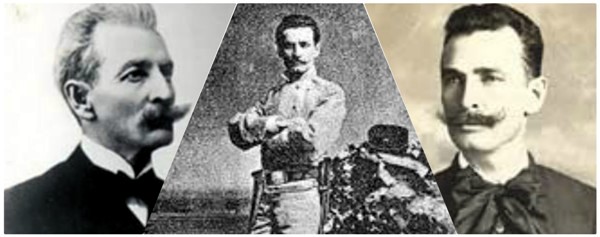
By Marta Gómez Ferrals/ ACN.
He was born in Havana on March 26, 1848 with the name Manuel Antonio Sanguily Garrite, this Cuban who achieved the rank of Colonel of the Liberation Army in the Ten Years' War against colonial rule (1868-1878) and also distinguished himself, as an intellectual and politician.
In his fruitful existence, he had enough time to travel the ardent paths of the soldier inspired by the first libertarian struggles of his native land, and the professional actions as a writer, professor and journalist, accompanied by a vast culture and its deep-rooted values.
To his credit is an impressive record of services to the country, marked by principles and rectitude in turbulent times, which called for defining decisions and fidelities.
Within his career, his status as a member of the legendary Camagüey cavalry under the command of Ignacio Agramonte shines, and he is among the classics of Cuban journalism, something not sufficiently remembered at present.
Precisely in his exercise he was able to develop his political background, his talents as a narrator and writer, his brilliant oratory and command of the Spanish language, which he knew how to combine with his performance as a patriot on the battlefield.
He graduated in Law in his youth, and also early on he was an editor and collaborator of the Cuban Magazine, a literary publication (Havana 1893-94), of which he was director.
He was also a renowned essayist, whose work includes Discourses to the Cuban Emigration (New York, 1877); The Caribbeans of the Islands, critical study (Havana, 1884) and A Cuban insurgent in the Court (Havana, 1888).
Although the above are only a few examples, the criteria and judgments expressed in his prose are considered among the best of criticism and opinion of his time.
For this reason he gained the merit of being the founder of the History Academy of Cuba in 1910, together with a host of illustrious figures such as Enrique José Varona, Juan Gualberto Gómez, Fernando Ortiz, José Miró Argenter, Juan Miguel Dihigo, Enrique Collazo and Ramón Roa.
Manuel Sanguily, in turn, was ennobled by his position in the face of American hegemonism, by courageously voting against the Trade Reciprocity Treaty with the United States of 1901, forcibly imposed by power, like the Platt Amendment, after its military intervention and occupation of the Island.
His battle within the Senate was vertical, since the mambí was in favor of commercial balance and the international opening of the island, while his opponents bowed or gave in to the pressures of Washington, which restricted Cuba's independence.
He opposed surrender and compliance with the designs of a powerful nation, determined to forever curtail the freedom won by Cubans in their last campaign.
The distinguished Creole colonel, forged in times of the War of Independence alongside the Major, and also under the orders of the honest and seasoned strategists Máximo Gómez and Antonio Maceo, always gave proof of his loyalty to the supreme cause of the Homeland.
Within his military imprint, fifty actions stand out and he stood out in such significant combats as those of La Sacra, Palo Seco and the battle of Las Guásimas.
He accompanied the Generalísimo as a member of a high command delegation in the meeting they held with Major General Vicente García in Loma de Sevilla, Camagüey. The issue was the Lagunas de Varona sedition, in which García was involved.
In the company of his brother Julio Sanguily, in January 1877, he carried out a mission to reinforce support for the Cuban cause from abroad with the organization of armed expeditions. First they spent the night in Jamaica and from there they continued towards New York.
There they learned of the Zanjón Pact and the subsequent end of the war despite the opposite vertical position, bravely expressed by Lieutenant General Antonio Maceo.
Years later, when the outbreak of the Necessary War organized by José Martí was able to crystallize, which occurred on February 24, 1895, his patriotic actions, always present, were reborn.
He traveled to Cuba and then to New York, where he made numerous organizational contacts at meeting points of Cuban emigration, to support the revolution continued by evocation of the Apostle.
He returned to the largest of the Antilles in October 1898, where he was invested as a delegate of the Second Army Corps to the Assembly of Representatives of Santa Cruz del Sur.
He later lived in the midst of the boiling indignation that shook the patriots due to the American outrage at the end of the war, a stage insultingly called the Spanish-American War, with contempt for the participation and prominence of the Cubans in its genuine libertarian feat.
He directed the Secondary Education Institute of Havana and after holding important administrative positions in different government cabinets, he retired from active politics in 1917.
He died on January 23, 1925 of natural causes in the same city where he was born, and he was the scion of a family of French emigrants. (Photo: Archive)